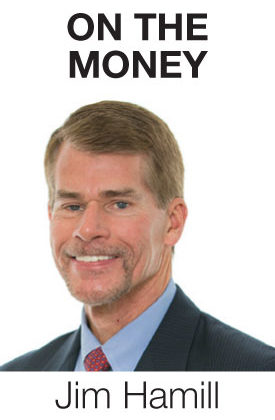
My parents were frugal people.
This was fortunate because neither had an employer-sponsored retirement plan. My father was an electrician and my mother a nurse. Beginning in the 1970s, they started to save money in an individual retirement account (IRA).
IRAs started in 1974. From 1974 to 1981, an individual could save as much as $1,500 each year. Contributions had to come from earned income. From 1982 through 2001, the allowed contribution increased to $2,000 per year.
……………………………………………………….
I suspect that my parents took full advantage of this $2,000 contribution limit during the years that they had earned income. They missed the periods where the limit slowly increased to its current level of $6,000.
Beginning in 1998 one could also contribute to a “Roth” IRA, named after a now-deceased senator from Delaware. Contribution limits were the same as with IRAs (a combined limit applied).
Most people fund IRAs with pretax dollars, which grow tax-free, and are taxed in full when withdrawn. Roth IRAs are funded with after-tax dollars, also grow tax-free, but can then be withdrawn tax-free.
With no change in tax rates, the economic results of a traditional and a Roth IRA are identical. Regular IRAs must be withdrawn by a designated age. Roth accounts have no required distributions until after the owner’s death.
The policy objective of both account types is to encourage saving for retirement. By 2018, 21.6 million individuals had accumulated $845 billion Roth dollars, an average of about $39,000 per account.
Roth IRAs can be an important safety net for many people who rely on social security and limited private savings for retirement. Before it is needed, the Roth can sit tight and grow free of tax.
Sen. William Roth was a Montana born and raised Republican who strongly advocated for tax cuts. He chaired the important Senate Finance Committee that writes tax legislation. His namesake IRA helps many regular folk save for retirement.
Congress has tried several ideas to encourage retirement savings. The death of the traditional pension plan leads most Americans to rely on social security, perhaps a small IRA, and the hope that “if the good Lord willin’ and the creek don’t rise” they can survive.
Then there’s Peter Thiel. In 1998 Thiel founded a company called Confinity that later morphed into PayPal. Thiel is quite rich. He also has a Roth IRA valued at $5 billion.
Let’s do some visioning together. Envision every resident of Florida. There’s 21.5 million of them. I’ll wait a moment to be sure you have them all in your vision.
Ready? Now envision a Southwest Airlines flight to Orlando. On board is 167 people. Got them all?
The Florida resident vision equates to the number of people with Roth IRAs. Thiel is one of them. If everyone with a Roth saved as much as Thiel, we could stuff the entire Roth-owning population in our 167-passenger Boeing 737. But it would take 129,342 similarly loaded 737s to fly the actual Roth-owning population.
How did Thiel do this? Apparently, he contributed the maximum $2,000 back in 1998, in the form of pre-IPO shares valued at $2,000. Perhaps he continued to do this until PayPal went public in 2002.
Were the pre-IPO shares valued properly? Should there be an overall limit on Roth-retirement balances? Should non-public, and seemingly risky, stock be allowed as a Roth (retirement) investment?
Before you pull out the free country card, remember that a Roth IRA is a government-created benefit. With rules. Set by elected representatives. Nothing has to be included or allowed. Rights are not violated if there are constraints.
It’s hard to believe pre-IPO PayPal was properly valued. Elon Musk was involved pre-IPO. That alone is worth something. It’s hard to fathom $5 billion in a retirement account that was intended to encourage the average person to plan for the future.
Is it right to have tax incentives to invest in risky start-ups? I’ve had clients with $5 million in an IRA and it didn’t concern me. Thiel has 1,000 times that. That seems troubling. Does Congress care?
I do not question Thiel’s right to his wealth. I do question a law that allow him to accumulate $5 billion in a “retirement” account that will never be taxed.
If the law doesn’t allow what he did, is anyone willing to look into it?
Jim Hamill is director of Tax Practice at Reynolds, Hix & Co. in Albuquerque. He can be reached at jimhamill@rhcocpa.com.
